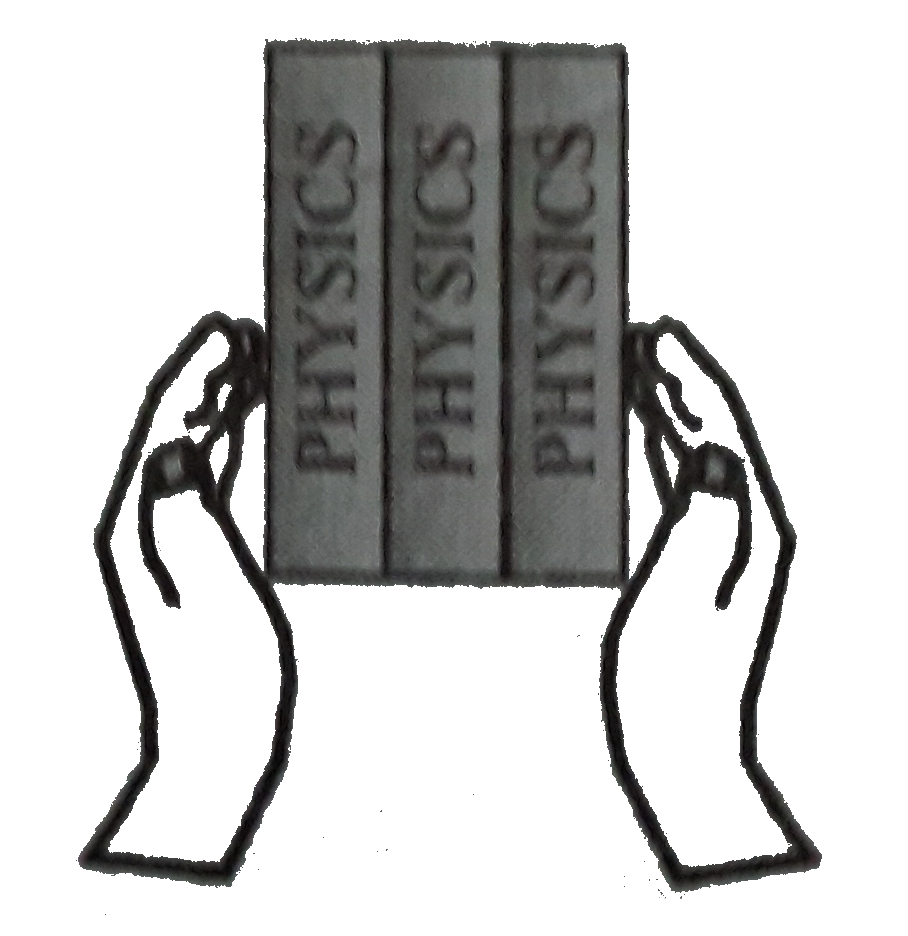In about 1915, Henry Sincosky of Philadelphia suspended himself from a rafter by gripping the rafter with the thumb of each hand on one side and the fingers on the opposite side (Fig. 6-35). Sincosky's mass was 79 kg. If the coefficient of static friction between hand and rafter was 0.70, what was the least magnitude of the normal force on the rafter from each thumb or opposite fingers? (After suspending himself, Sincosky chinned himself on the rafter and then moved hand-over-hand along the rafter. If you do not think Sincosky's grip was remarkable, try to repeat his stunt.)

FN=2.8×102N
Topper's Solved these Questions
- FORCE AND MOTION-IIBOOK - RESNICK AND HALLIDAYCHAPTER - FORCE AND MOTION-IIEXERCISE - PRACTICE QUESTIONS (Single Correct Choice Type)
23 Videos
- FORCE AND MOTION-IIBOOK - RESNICK AND HALLIDAYCHAPTER - FORCE AND MOTION-IIEXERCISE - PRACTICE QUESTIONS (More than One Correct Choice Type)
4 Videos
- FORCE AND MOTION-IIBOOK - RESNICK AND HALLIDAYCHAPTER - FORCE AND MOTION-IIEXERCISE - CHECKPOINTS
5 Videos
- FORCE AND MOTION - I BOOK - RESNICK AND HALLIDAYCHAPTER - FORCE AND MOTION - I EXERCISE - PRACTICE QUESTIONS (Integer Type)
3 Videos
- GAUSS' LAW BOOK - RESNICK AND HALLIDAYCHAPTER - GAUSS' LAW EXERCISE - PRACTICE QUESTIONS (INTEGER TYPE)
3 Videos
Similar Questions
Knowledge Check
The thumb of humans moves more freely than other fingers due to the presence of
Agliding jointBhinge jointCsaddle jointDpivotal jointThe thumb of humans moves more freely than other fingers due to the presence of
Agliding jointBhinge jointCsaddle jointDpivotal joint
With two hands you hold a cone motionless upside doen , as shown in figure The mass of the cone is (m=1kg) and the coefficient of static friction between you fingers and the cone is (μ=0.5) what is the minimum normal force you must applywith each hand in order to hold up the cone? Consider only translational equilibruim

View SolutionWith two hands you hold a cone motionless upside doen , as shown in figure The mass of the cone is (m=1kg) and the coefficient of static friction between you fingers and the cone is (μ=0.5) what is the minimum normal force you must applywith each hand in order to hold up the cone? Consider only translational equilibruim

View SolutionIn AM wave the amplitude of each side hand frequency is
View SolutionState right hand thumb rule and right hand srew rule .
View SolutionFind minimum normal force to be each hand to hold there identical books in verticle position Each books has mass m and the value of coefficient of friction between the books as well as between hand and the book is μ

View SolutionFind minimum normal force to be each hand to hold there identical books in verticle position Each books has mass m and the value of coefficient of friction between the books as well as between hand and the book is μ

View Solution

